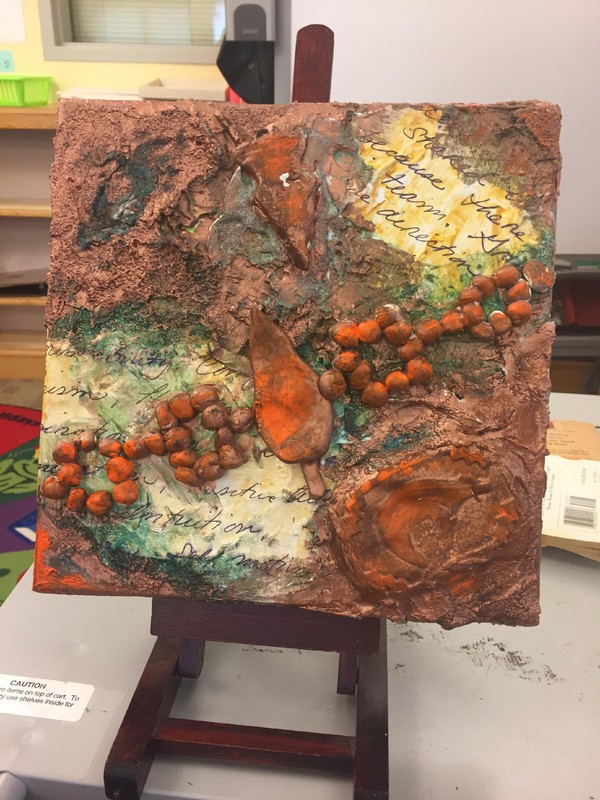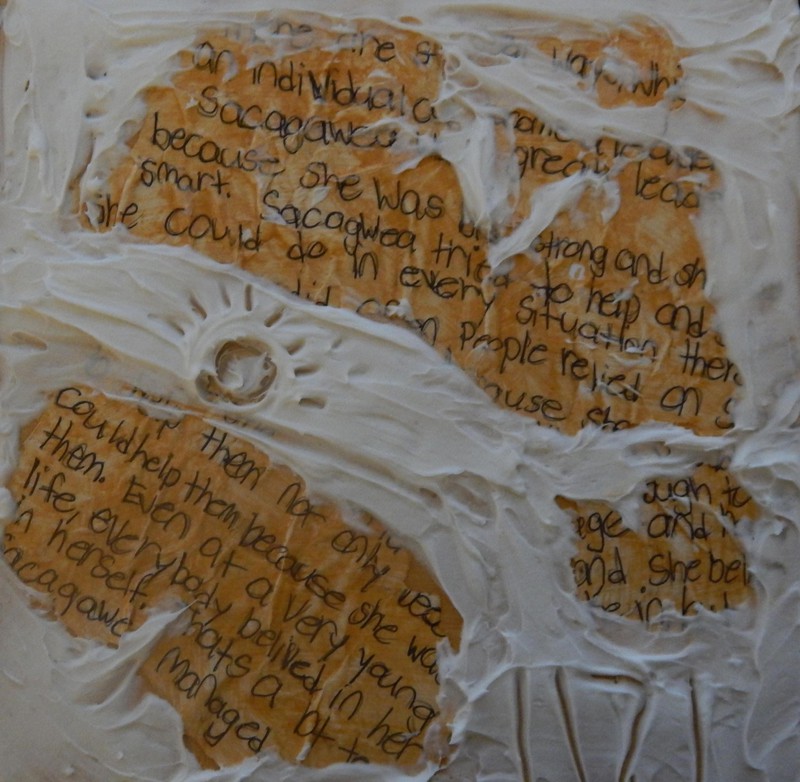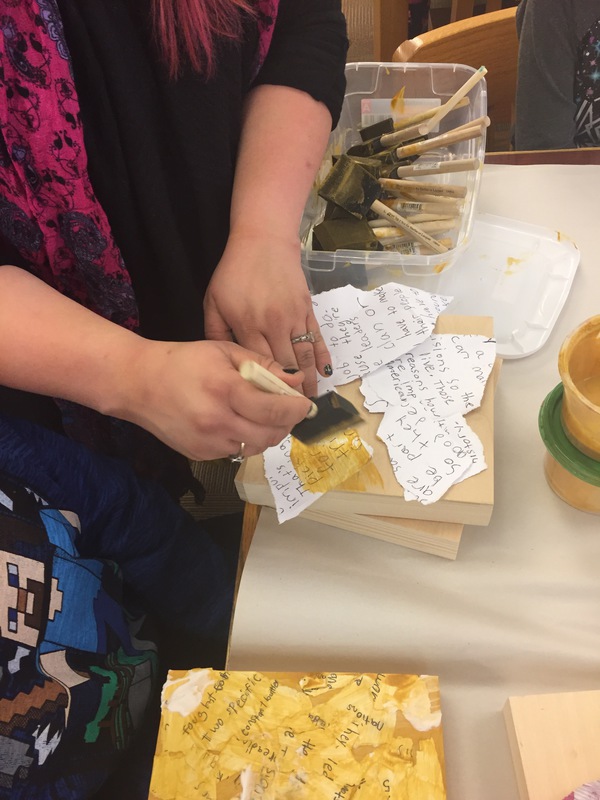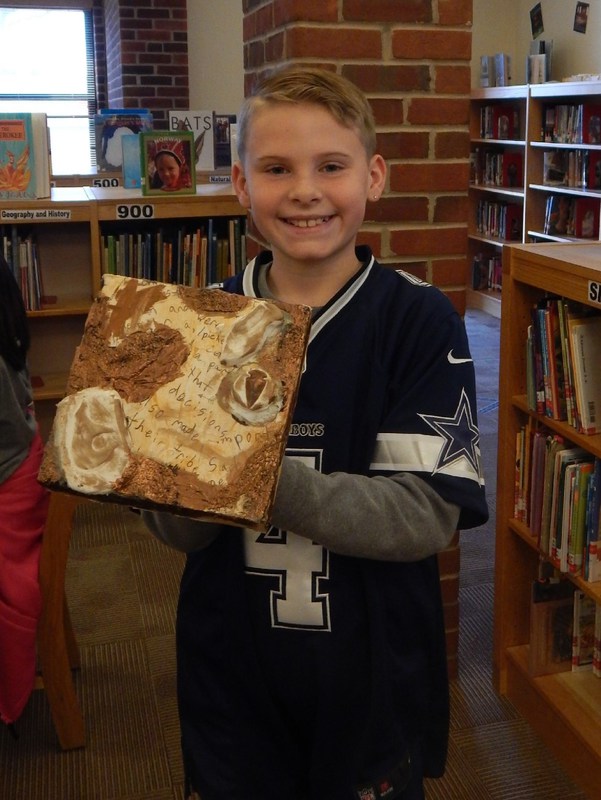
In Patchogue-Medford, fourth graders were learning about the Woodland Indians—specifically, the Algonquin and Iroquois tribes of New York State. Their teachers wanted them to understand the different roles of tribe members as well as recognize the qualities that were considered important in their leaders. To reinforce the classroom lessons, the teachers collaborated with teaching artist Beth Giacummo to develop an arts-integrated project. The project involved creating of mixed media pictographs that symbolized the positive qualities of the tribal leaders that are relavant to leaders of our country.
In the first session of her artist residency, Ms. Giacummo explained that the students would be creating textured pictographs (below) that incorporated the symbols of positive leadership among the Woodland Indian tribes. The pictographs would be created on cradle boards using texture mediums, sculpture and students leadership statements. Throughout the project, the teaching artist used her own pictograph to help illustrate the project’s steps.

Each session was designed to support what was happening in the classroom. The students began the project by transcribing the leadership qualities they’d written about with their classroom teacher on to aged paper provided by Ms. Giacummo. For example, the children had learned that Algonquin leaders thought fairness was an important attribute. Also, the leaders wanted to protect the rights of their people. Women in the tribe, while never the tribe’s leader, were the ones who chose the leader. These leadership qualities were written on plain paper and then aged with pigment.. Afterwards, the students torn the aged paper and adhered pieces to the cradle board (below).

Ms. Giacummo demonstrated how to use paint to make the words look old (below).

In a subsequent classroom lesson, the fourth graders learned about the importance of wampum, beads, arrow heads and other Native American symbols of leadership (below).

During the second and third sessions, Ms. Giacummo reinforced the classroom teachers’ lessons by showing students how they could incorporate Native American objects and symbols, including the symbol of the Iroquois nations in their pictographs (below). Various methods of sculpture were explored, including the use of push molds to create impressions and hand building for various elements.

Once the students grasped the concepts, they used materials to construct bas relief mixed media sculpture pieces and Algonquin and Iroquois symbols and objects for their pictographs (below).

As the students worked, they shared tips with one another, such as how to apply the paint (ie, “dab, don’t glob”).

During the final session, Ms. Giacummo engaged the students in a reflection about the art project. As the students spoke about their pictographs, they demonstrated what they’d learned about the positive qualities of a leader. They described the difference between being a leader and a follower. In addition, they shared their art process and what they’d learned during the creation of their pictographs.

